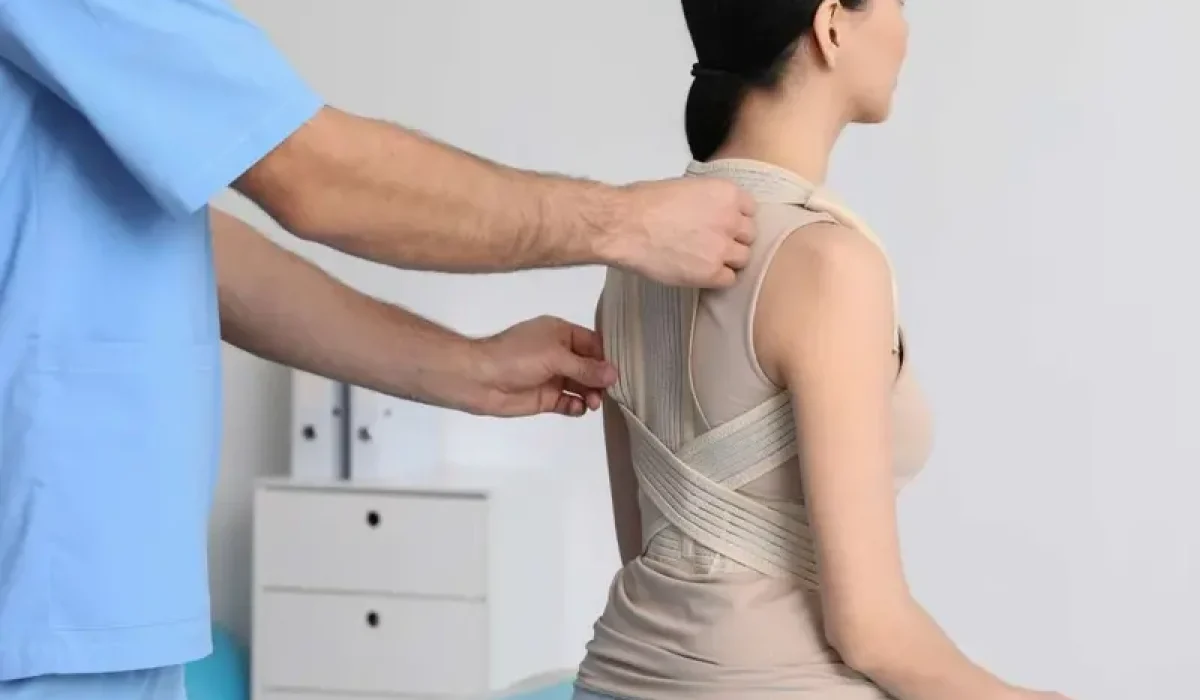If you’ve been dealing with persistent headaches and can’t figure out why, the answer might be right under your nose—or rather, right above your shoulders. The relationship between posture and headachesis stronger than many people realize, and understanding this connection could be the key to finding lasting relief from your pain.
At Capstone Physical Therapy & Fitness, we see countless patients who suffer from chronic headaches without realizing that their daily posture habits are the primary culprit. Whether you’re hunched over a computer for eight hours a day or constantly looking down at your phone, poor posture creates a domino effect that often leads directly to headache pain.
Understanding the Posture-HeadacheConnection
Your head weighs about 10-12 pounds, roughly the same as a bowling ball. When your posture is aligned correctly, your neck muscles can support this weight efficiently. However, when you shift into poor posture—like the classic “forward head” position—those same muscles have to work much harder.
Think about holding a bowling ball close to your chest versus extending it out in front of you. The farther forward your head moves from its natural position, the more strain you place on your neck and shoulder muscles. This increased tension doesn’t just stay in your neck; it travels upward, creating the perfect conditions for headaches to develop.
The most common postural problems we see include:
- Forward head posture (often called “tech neck”)
- Rounded shoulders
- Hunched upper back
- Tilted pelvis affecting the entire spinal chain
Types of Headaches Linkedto Poor Posture
Not all headaches are created equal, and understanding which type you’re experiencing can help determine if posture is playing a role in your pain.
Tension Headaches:These are by far the most common type of headache, and they have a direct relationship with muscle tension in your neck and shoulders. Tension headache reliefoften comes from addressing the underlying postural issues that create this muscle tension in the first place. You might feel a dull, aching sensation that wraps around your head like a tight band, or pressure at your temples and the back of your head.
Cervicogenic Headaches: These headaches literally originate from problems in your cervical spine (neck area). Poor posture places abnormal stress on the joints and muscles in your upper neck, which can trigger pain that radiates into your head. Neck pain therapyis often essential for treating these types of headaches because the source of pain is mechanical rather than neurological.
Occipital Neuralgia:This involves irritation of the occipital nerves that run from the top of your spinal cord through your scalp. Poor posture can compress these nerves, leading to sharp, shooting pains that travel from the base of your skull to the top of your head.
How Modern LifeAffects Your Posture
Our daily habits have evolved faster than our bodies can adapt. The average person spends over seven hours a day looking at screens, often in positions that wreak havoc on proper spinal alignment.
The Smartphone Effect:When you look down at your phone, you can increase the effective weight of your head by up to 60 pounds. Multiply this by the hundreds of times per day we check our devices, and you’re talking about serious cumulative stress on your neck muscles.
Desk Job Dilemmas:Traditional office setups often promote poor posture. Monitors placed too low force you to crane your neck downward, while keyboards and mice positioned incorrectly can cause you to hunch your shoulders forward. Without proper ergonomic adjustments, these positions become ingrained habits that persist even when you’re away from your desk.
Sleep Position Impacts:Even how you sleep can affect your daytime posture and headache frequency. Sleeping on your stomach forces your neck into rotation for hours, while using pillows that are too high or too low can maintain poor cervical alignment throughout the night.
The Role of PhysicalTherapy in Headache Management
Physical therapy takes a comprehensive approach to addressing the root causes of posture-related headaches rather than just masking the symptoms.
Assessment and EvaluationYour physical therapist will conduct a thorough evaluation of your posture, movement patterns, and muscle imbalances. This might include analyzing how you sit, stand, and move throughout your daily activities. We also assess the flexibility and strength of key muscle groups that support proper head and neck positioning.
Targeted Exercise ProgramsBased on your specific issues, we’ll design an exercise program that addresses your unique needs. This typically includes strengthening exercises for weak muscles (often the deep neck flexors and upper back muscles) and stretching exercises for tight muscles (commonly the chest, upper traps, and suboccipital muscles). These exercises provide long-term tension headache reliefby correcting the underlying imbalances.
Manual Therapy TechniquesHands-on techniques can provide immediate relief while your body adapts to better movement patterns. This might include soft tissue mobilization to release tight muscles, joint mobilization to improve neck mobility, and trigger point therapy to address specific areas of tension that contribute to your headaches.
Ergonomic EducationWe don’t just treat you in the clinic; we teach you how to set up your work environment and daily activities to support better posture. Simple ergonomic adjustmentslike raising your computer monitor to eye level, using a document holder, or adjusting your chair height can make a dramatic difference in your symptoms.
Practical Strategiesfor Better Posture
While professional treatment is often necessary for persistent headaches, there are several strategies you can implement immediately to start improving your posture and reducing headache frequency.
The 20-20-20 RuleEvery 20 minutes, look at something 20 feet away for at least 20 seconds. This gives your neck muscles a break from sustained positions and helps reset your posture.
Strengthen Your CoreA strong core provides the foundation for good posture throughout your entire spine. Simple exercises like planks, bird dogs, and dead bugs can significantly improve your ability to maintain proper alignment.
Create Postural RemindersSet phone alarms or use apps that remind you to check your posture throughout the day. It takes time to build new habits, and these external cues can be invaluable during the transition period.
Optimize Your Sleep EnvironmentInvest in a pillow that supports the natural curve of your neck and consider your mattress firmness. Your spine should maintain its natural curves even while you’re sleeping.
When to Seek ProfessionalHelp
While minor postural adjustments can help with occasional headaches, certain symptoms warrant professional evaluation. You should consider neck pain therapyfrom a qualified physical therapist if you experience:
- Headaches that occur more than twice per week
- Headaches that interfere with your daily activities
- Neck pain or stiffness that accompanies your headaches
- Headaches that worsen with certain positions or movements
- Any changes in the pattern or intensity of your headaches
Success Stories:Real Results from Posture Correction
At Capstone Physical Therapy & Fitness, we’ve helped numerous patients break free from the cycle of chronic headaches through targeted posture correction. Sarah, a graphic designer, came to us experiencing daily headaches after switching to remote work. Through a combination of ergonomic adjustmentsto her home office setup, targeted strengthening exercises, and manual therapy techniques, she went from daily headaches to being completely headache-free within six weeks.
Another patient, Mike, had been dealing with tension headaches for over two years. Traditional pain medications provided only temporary relief. By addressing his forward head posture and implementing a comprehensive exercise program, he experienced a 90% reduction in headache frequency and intensity.
Taking the Next Step
The connection between posture and headachesis undeniable, but the good news is that postural problems are highly treatable. With the right approach, most people can achieve significant tension headache reliefand prevent future episodes.
If you’re tired of living with chronic headaches and suspect that your posture might be playing a role, don’t wait for the problem to worsen. The team at Capstone Physical Therapy & Fitness is here to help you identify the root causes of your pain and develop a personalized treatment plan that addresses your specific needs.
Remember, every day you spend in poor posture is another day of accumulated stress on your neck and shoulders. But every day you invest in better posture habits and professional treatment is a step toward a headache-free future. Your neck—and your head—will thank you for taking action today.
Ready to break free from posture-related headaches? Contact Capstone Physical Therapy & Fitness today to schedule your comprehensive evaluation and start your journey toward lasting relief.




